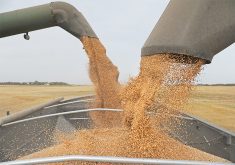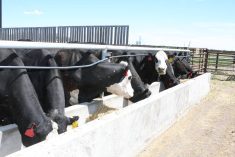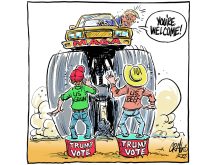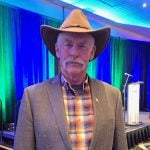There’s reward in cattle feeding chores during the winter.
The herd stands bunched at your nearest point of approach, eyes trained expectantly toward the place the truck or tractor is likely to appear.
The air above them is foggy with expelled breath and body heat, as the animals create their own microclimate on a cold day. Unlike visits at other times of year, for roundup or vaccination purposes, the whole herd is actually happy to see you. Usually you’re happy to see them too, if they’re feet side down and ready to be fed.
Read Also

Agriculture productivity can be increased with little or no cost
There’s a way to enhance agricultural productivity with little or no cost. It doesn’t even require a bunch of legislative changes.
The process would be far more challenging if you lived in Colorado or Kansas right now. Four feet of snow and wind-driven 15-foot drifts have stranded cattle herds and cut them off from food and water. Affected areas include those two states, northeastern New Mexico and parts of Oklahoma, Texas and Nebraska. In Colorado alone, some 340,000 cattle could be affected.
The U.S. National Guard has been called in with helicopters and army vehicles to bring hay to these animals, but the weather hasn’t co-operated and cattle officials are worried. They fear losses could equal those of 1997, during similar weather, when 30,000 head were lost. See page 65 for more details and photos on the situation.
I’ve been following cattle aid efforts closely in part because one of my earliest memories involves this type of situation.
A southern Alberta storm in April 1967 dropped a record five feet of snow. The power was out and the cattle were stranded in pastures unreachable by the usual means.
It was a chore to get out of the house. By the time housebound tots were allowed outside, a trail had been made. All I could see were towering mounds of snow to the right and left, and above, in a blue, blue sky, Canadian army helicopters flew over, carrying bales to cattle stranded at various ranches in the region.
I have it on good authority that many a rancher lobbied for a chopper ride, partly to scout for livestock and partly for the thrill of lifting off in one of those big green brutes, high above the snow-plagued problems below.
Despite best efforts, thousands of cattle died in that storm, stranded on the so-called open range.
A spring Chinook took the snow away in a matter of days during late April and early May that year. Cattle producers in Colorado and Kansas don’t have the possibility of that particular blessing.
Though we may not always see eye to eye with some Americans on cattle trade issues, all bets are off in the face of this nature-induced tragedy. We wish them well.














